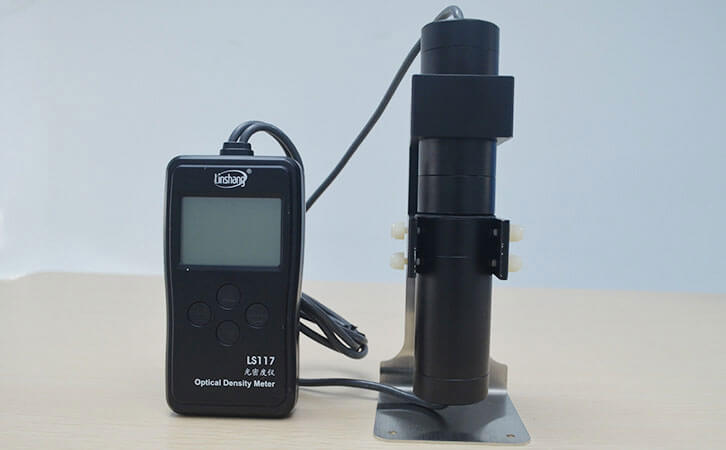Transmittance Test of Dimming Glass by Optical Density Meter
With the development of technology, more and more electronic light control products are used in the film industry. Dimming glass is to stick a film on the glass and increase the voltage of the film to make the film penetrate and fog, so as to protect people's privacy. The dimming glass (dimming film) utilizes the optical properties of the liquid crystal to realize the photoelectric function of the film.
As an electronic curtain, dimming glass can automatically control the light transmission degree. When the external light is strong, the dimming glass is opaque or translucent. When the external light is weak, energizing the dimming film makes the dimming glass completely transparent.
So how do we conduct the transmittance test of the dimming glass? An optical density meter is generally used. Dimming glass is actually a light-adjusting film on a common glass. Therefore, when measuring the transmittance of the dimming glass, we only need to test the dimming film.
Although the light transmittance of the light-adjusting film is variable under the energization state, the national related regulations have requirements for the light transmittance of the light-adjusting film. The light-adjusting film has a milky white light transmittance of not more than 2% under power-off conditions and a light transmittance of not less than 75% when energized. Since the dimming film itself is milky white in the power-off state, we cannot use the ordinary optical density meter when detecting the light transmittance. It is because the ordinary optical density meter adopts the design principle of parallel light or point light source. The milk white material or the translucent material itself has a diffusion effect on the light source. Therefore, the ordinary optical density meter cannot fully receive the transmitted light.
The optical density meter using the diffuse transmission design principle can completely receive the transmitted light intensity. For example, the LS117 optical density meter not only adopts the diffuse transmission design principle, but also has an integrating sphere effect on the receiving port of the probe. It can receive light completely and efficiently. Therefore, if you need to test the transmittance of the dimming glass, you can choose Linshang LS117 optical density meter.
- LS117 Optical Densitometer Measure Welding Mask Glass
- Companre LS117 Optical Density Meter With Others
- LS117 Densitometer Measure Application
- Difference of LS117 Densitometer and X-Rite 341 Densitometer
- LS117 Transmission Densitometer-Related Knowledge
- The details of LS152 glass light transmittance on-line monitoring device
